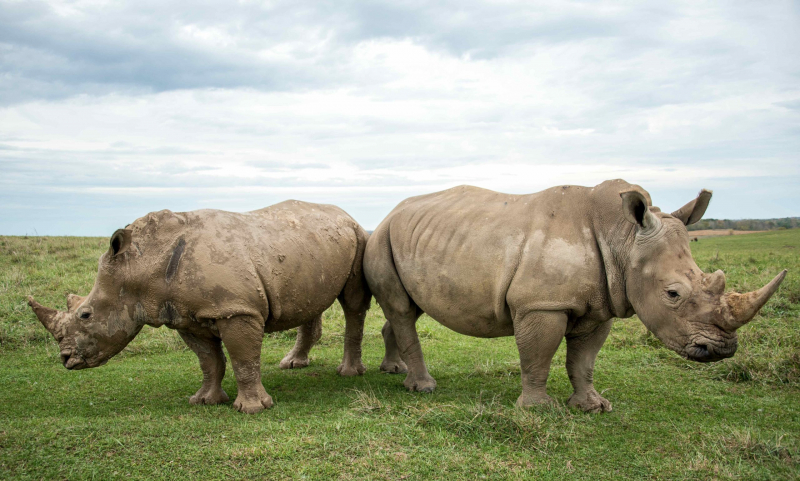White Rhino
The white rhino is an iconic species of the African savannah. It is known for its imposing size and distinctive features. As one of the largest land mammals, the white rhino, particularly the Northern white rhino, has become a symbol for conservation efforts due to its critically endangered status. These gentle giants have unique attributes and face challenges that set them apart from other wildlife.
White rhinos are characterized by their square-lipped mouth, which is an adaptation for grazing. Unlike their black rhino cousins, which are browsers, white rhinos have a broad, flat mouth for eating grass. They spend much of their time in savannahs and grassy plains, where they graze peacefully. A mature white rhino can weigh up to 2,300 kg and reach lengths of up to 4 meters. They are massive, with a large head and a hump on their neck, which supports their large skull.
One of the most striking features of white rhinos is their two horns, with the front horn being longer. These horns are made of keratin, the same substance that forms human hair and nails. Unfortunately, these horns are highly coveted. That leads to rampant poaching that has significantly threatened their populations.
White rhinos have a relatively long lifespan, living up to 40-50 years in the wild. They have few natural predators, thanks to their size and the protective social groups they form. These groups, called crashes, usually consist of females and their offspring. Males are typically solitary but can be territorial.
Their diet is strictly herbivorous, consisting mainly of grass. They have a wide mouth adapted for grazing on the grasslands of Africa. They need to consume a significant amount of grass each day to sustain their large bodies. Which contributes to their role in shaping and maintaining the African grassland habitat.
Despite their size and strength, white rhinos face significant threats from humans. Poaching for their horns is the most significant threat. This has led to drastic declines in their population. Conservation efforts are ongoing to protect these magnificent creatures, with strategies focusing on anti-poaching measures and maintaining their natural habitats.
Key Takeaways:
- Type: White rhinos are large, grass-grazing mammals.
- Size: They can reach up to 4 meters in length.
- Weight: Adults can weigh up to 2,300 kg.
- Diet: They are herbivores, primarily feeding on grass.
- Average Lifespan: They can live for 40-50 years in the wild.











